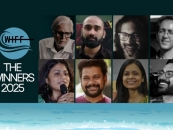
An Elite Cafeteria Or A Canteen For Everyone?
by Deepa Bhalerao July 30 2015, 11:18 pm Estimated Reading Time: 8 mins, 35 secsJune 30, 2015, 9.15 pm
I heaved a sigh of relief as I put down my purse, lunchbox, umbrella and some vegetables I had picked up on the way home from work. As a habit, I reached out for my cell-phone that I had last seen about 20 minutes ago. Five missed calls from the same number and a message to tell me that I should call back because it was urgent. This was from a lady who rarely calls me. My hairdresser is very busy person and I had met her just last Sunday. I wondered what it could be, as I dialled her number.
“Sorry to bother you this late Ma’am, but one of my clients called me a while ago, in a very distressed state. She was sobbing and said she needed to speak with the lady who was speaking about the places that have been created to help women. She said that she was getting her hair done sometime last year when she had heard your conversation about how the police and NGOs have created support systems for women facing violence at home and work places. She couldn’t recollect your name but was very keen to connect as soon as possible, as it might turn out to be ‘a matter of life and death’!”
I asked my hairdresser friend to tell her to call me immediately. The lady spoke to me briefly, and said she would call back when she was alone, because, if anyone in the house heard her speaking to me, it might have some dire consequences.
Late that night, she called me to narrate a sordid tale of violence in her house. She was scared for her life, as her husband, a highly placed corporate employee had a temper that had made domestic life progressively unbearable. His controlling ways and constant suspicions had driven her to contemplate suicide. She had taken a while to understand the pattern and had never had the courage to speak about it to anyone, as it would have been taken as an affront to their marriage by the husband.
One more unprovoked violent incident that evening had broken her spirit and she felt that she needed to at least find out if she could get any help.
I spoke to her at length and after she regained composure, I reassured her that hers was not a hopeless situation. We discussed the various avenues for seeking help and decided on a follow-up as soon as possible.
Domestic violence is more common than one would like to imagine. It has been recognised as a major hazard for the health and wellbeing of women and children and is known to affect families in ways that can have far reaching and often permanent consequences. We have laws that address this and mechanisms that have been set up by the government. A victim can approach the nearest facility- whether police station or NGO and seek protection and help. Telephonic help-lines are in place in many cities and towns and the response is immediate.
However, a woman from the upper middle class, who is financially secure and has access to all amenities of life in a metro like Mumbai had no idea who she should approach when she was confronted with a problem like intimate partner violence. She approached someone who she had heard speaking about the issue in a general conversation that she had overheard a year ago!
We often say that we live in a hyper-connected world, where anyone can contact anybody anywhere in the world in an instant. We have instant messaging, news apps and daily newspapers at our fingertips. We have interactive social media that is credited for breaking news even before the news media can reach the place, and we have giant billboards with all kinds of suggestions bearing down upon from every space on large roads and highways. And yet, the most crucial and sometimes lifesaving information does not seem to feature anywhere on it.
If a woman is distressed in her home, if a child is begging in traffic, if an animal is lying injured by the roadside, if a senior citizen is in urgent need of help, if a concerned person is looking for reporting a crime, if a young girl is getting harassed by someone, there is no number/s or person/s that comes to mind. We search our memories for a clue to a conversation, a reference or a guiding point and if we are lucky, we find that number, place or person.
This brings to mind, some very basic questions.
What is the purpose of mass media? Who is it supposed to serve? Do the issues they address have direct relevance to the people at the receiving end?
We have the Census data, the National Family Health Survey and countless other research reports that tell us the status of our society. The fact that access to livelihood, a clean environment, land rights and healthcare are overarching themes that preclude any positive change in our social system is a no- brainer. That inequity has been the cause of this situation is also a fact that no one can contest.
Just recently, the findings of the Socio-Economic Survey for India 2011 were released.
The highlights just go to reaffirm what we have already known.
Key findings: households
- Of 180 million rural households, 38.27% of landless households derive a major part of their income from manual casual labour.
- 2.73% of households with non-agricultural enterprises are registered with the government.
- 4.58% of households pay income tax/professional tax.
- 0.37% of households are destitute or living on alms.
- 5% of households have salaried jobs in the government.
- 1.11% of households have salaried jobs in the public sector.
- 3.57% of households have salaried jobs in the private sector.
- 12.83% of household heads are female.
Key findings: income
- Monthly income of highest earning household member is Rs 5,000: 74.49%
- Monthly income of highest earning household member is Rs 5,000–10,000: 17.18%
- Monthly income of highest earning household member is Rs 10,000: 8.29%
- Households owning mechanised three/four wheeler agricultural equipments: 4.12%
- Households having kisan credit card with the credit limit of Rs.50,000 and above: 3.62%
- Total households owning un-irrigated land: 29.70%
- Total households owning irrigated land: 25.63%
- Total households owning other land: 11.95%
- Households with irrigation equipment: 9.87%
- Household which have no land, but have irrigation equipment: 0.89%
- Household which don’t own land, but have kisan credit card: 0.39%
(Source – Down to Earth magazine )
Who speaks about these millions who struggle with basic needs, and who speaks to them?
We are often the prisoners of our own environment. The new channels on TV believe in ‘breaking news’ of several kinds and inequity finds space in sensational stories that alarm but do nothing towards presenting a holistic picture to the viewer. What mostly finds a way into newsroom debates are the shenanigans of the politically significant and the rich and famous. It is well understood that governance and its various good and bad facets require to be brought to public attention, but why must it take up all the important space?
Newspapers and television channels are located in urban centres. They are staffed by those who have specialized in mass media institutions that are also mostly urban based. The primary target group is city-dwelling and educated. Combined with the importance of ad revenues and sponsors, the news that makes the headlines is also with a very urban and educated slant.
The hoardings and billboards in cities are filled with advertisements for luxury items and cosmetics. Very few carry any information that can be of direct or immediate help to people.
Our schools do not teach environment studies beyond the classroom. Gender is a subject that the various school boards have not yet introduced in their curriculum. Rural realities are not elaborated in the textbooks beyond the mention of agriculture and natural resources when speaking about the ‘greatness’ of our country. Literature syllabi in school are not inclusive of the writings of the underprivileged, and social mainstreaming for excluded communities is still a distant dream.
Media are the eyes and ears of the society. The reach and influence is beyond the obvious. If the eyes see only a partial picture and the ears hear just the sounds of those who shout the loudest, there can never be any discomfort created in the audience and thereby no possibility of the hope of working towards an inclusive and equitable society.
There exists a large amount of data to use as the base for reporting and investigating issues and problems that plague those whose voices have not been heard yet. The stories that will help us understand the complete picture also need to be told.
How media can make a difference-
Popular media needs to carry analysis of data in easily understandable language. The salient points need to be highlighted and reiterated. There are many data sources in the public domain that are not fully utilised for dissemination of information. This include the Census data, the National Family Health Survey, the Human Development Index, and the various UN websites.
Social media sites are very useful in furthering the reach of important news and in active engagement with the audiences. Discussion forums can ensure wide outreach of meaningful and relevant content to audiences.
Health, sustainable development and environment are top priority issues worldwide and yet, they find less space in popular media than other items. There requires to be a definitive strategy to bring these into wider view of the audiences.
When the appropriate type of media reaches out to the relevant audience, in an optimal way is when it would have realised its crucial role. Thereafter, the possibilities for positive social change are endless.




-173X130.jpg)
-173X130.jpg)
-173X130.jpg)
-173X130.jpg)
-173X130.jpg)

-173X130.jpg)
